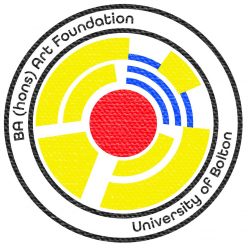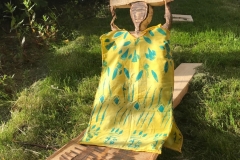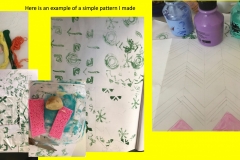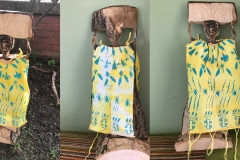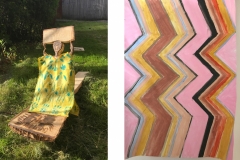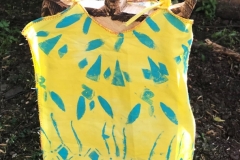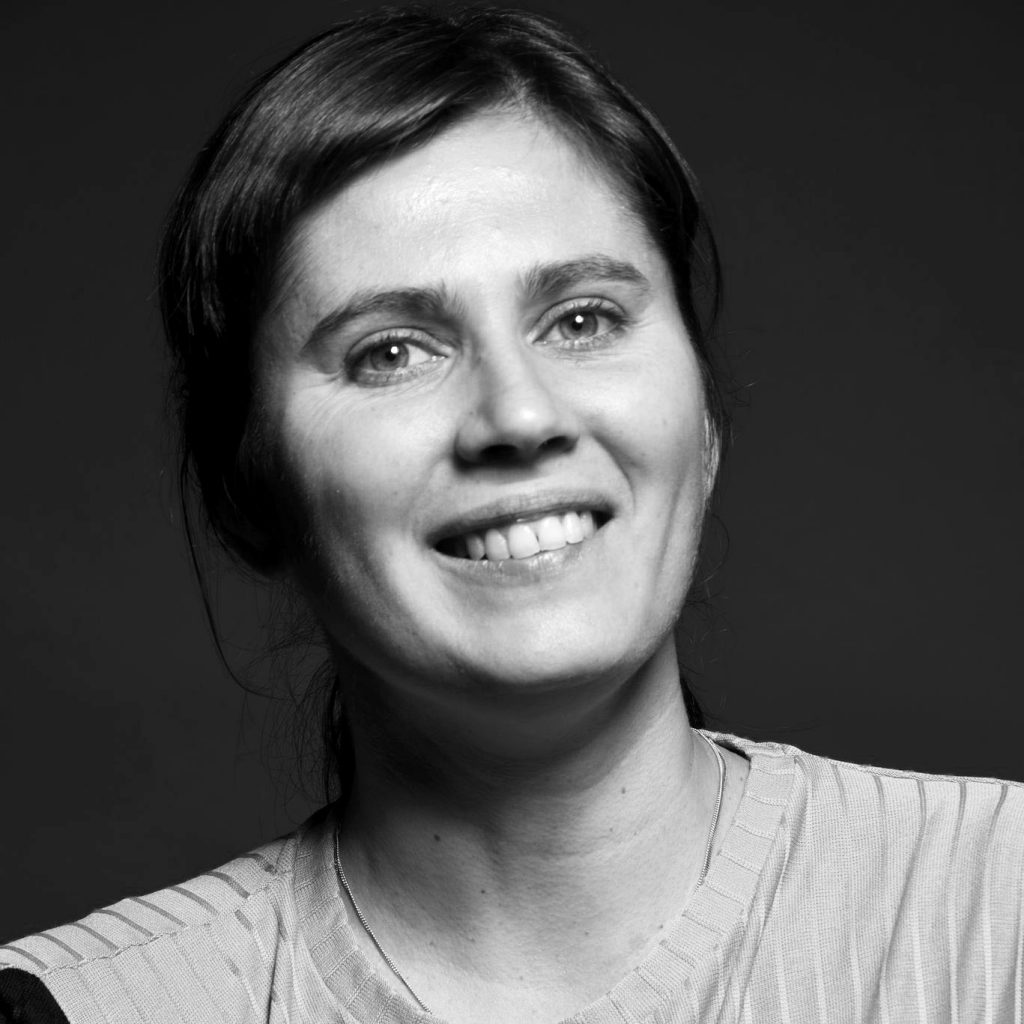
Adinkra cloths have caught my eye for awhile — the lively mixes of patterns and colours. These symbols are from the Akan culture in Ghana. They use these Adinkra symbols to decorate things like wood objects, pottery, buildings, jewellery and fabric. Traditionally these designs were reserved for the Asante kings, but now more people in Akan culture wear the cloth for important occasions. As Ghana is a West African country, situated in a tropical zone, in choosing a pattern I opted for the happier colour. This contrasts the traditional red and black Adinkra fabrics.
Yellow-known to be colour of sunshine, associated with joy, happiness, tropics, warm, represents royalty. Blue-is stability. The meaning of colours is what drew me to choose them. And chosen symbols had to fit it as well. I have tried to put some expression of my own personalities. As We don’t usually wear our hopes, dreams, wishes on our clothes into our fabric. There is a way to do it without being obvious: use symbols to tell about your view or story.
My work communicates traditional African patterns using symbols. The design are quirky and bright, I have a passion for vibrant colours and surface patterns. I have explored sculpture and print using traditional method.
The materials I have had access to during isolation have been limited, natural dyes found in the kitchen and have been used to dye background, where I have then printed symbols using potato stamps associated with Ghana beliefs. My wooden sculpture represents an African woman silhouette, Natural wood has been chosen as it is more related to the nature and wilderness and theme of the project.It can be used as a picnic chair or just a statue.
